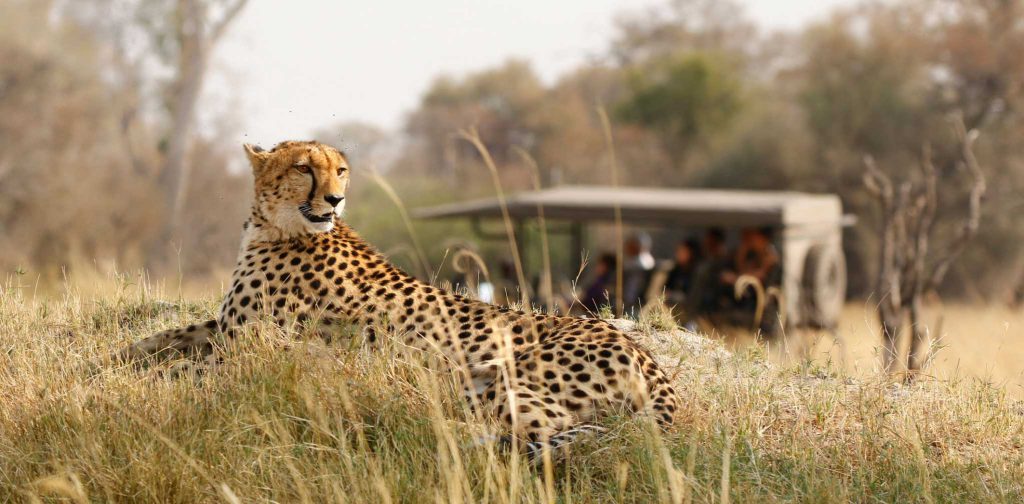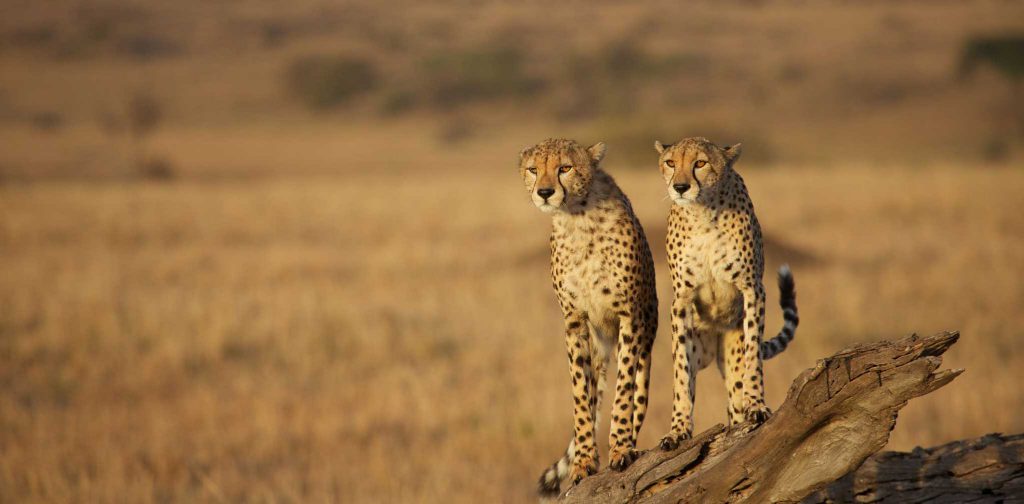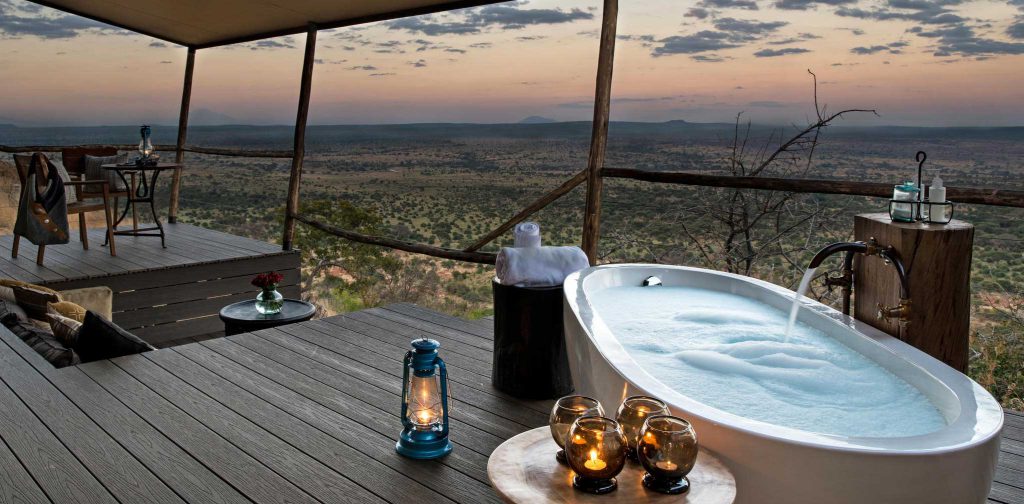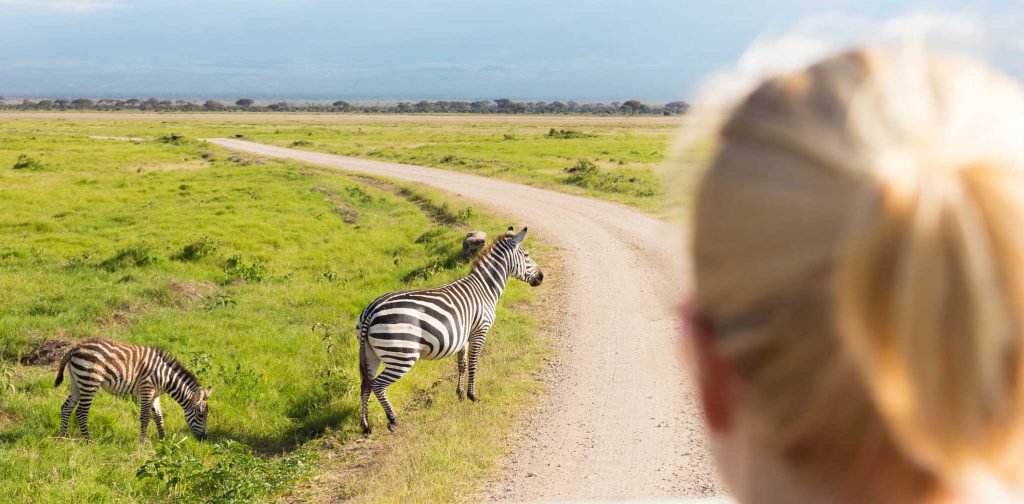Welcome to our extensive guide on the best time to visit Tanzania for an unforgettable safari experience! Tanzania, located on the eastern coast of Africa, is a diverse and captivating country known for its stunning landscapes, abundant wildlife, and vibrant culture. It is home to the majestic Mount Kilimanjaro, the Serengeti National Park, the pristine beaches of Zanzibar, and the breathtaking Ngorongoro Crater, making it a dream destination for nature enthusiasts and adventure seekers alike.
A. Importance of choosing the right time to visit
When planning a trip to Tanzania, it is crucial to consider the timing of your visit. The country experiences distinct seasons and weather patterns, which can greatly impact your travel experience. Choosing the right time to visit ensures that you can make the most of your trip, whether you’re embarking on a safari, exploring the wilderness, or relaxing on the beach.
Imagine standing on the vast plains of the Serengeti, witnessing the epic migration of millions of wildebeest, zebras, and gazelles, as they navigate treacherous river crossings and evade lurking predators.
Picture yourself immersing in the rich cultural tapestry of Tanzania, connecting with friendly locals, and indulging in mouthwatering cuisine. Whether you’re an adventurer, a nature lover, or a culture enthusiast, Tanzania offers an experience that will leave you in awe. But when is the best time to visit this enchanting land? Let’s embark on a journey to discover the ideal seasons to explore Tanzania’s wonders and create memories that will last a lifetime.
Table of Contents
• Understanding Tanzania’s Climate
• Pros & Cons: Dry and Wet Seasons Safari
• Northern Circuit: Timing for Serengeti and Kilimanjaro
• Southern Circuit: Seasons for Selous and Ruaha
• Zanzibar Archipelago: Tropical Paradise
• Cultural Experiences: Festivals and Traditions
• Safari Timing FAQs
II. Understanding Tanzania’s Climate
Tanzania encompasses a vast area and exhibits diverse topography, leading to a variety of climates across the country. It can be broadly divided into four geographical regions: the coastal plains, the central plateau, the Great Rift Valley, and the highlands in the north and south. Each region has its unique characteristics that contribute to the overall climate of Tanzania.
Influence of the Equator and Altitude on climate
Tanzania’s proximity to the Equator plays a significant role in its climate. The country experiences a tropical climate, with temperatures generally high throughout the year. However, altitude has a notable impact on temperature variations. As you ascend to higher elevations, such as the peaks of Mount Kilimanjaro or the highlands of the Ngorongoro Conservation Area, temperatures become cooler due to the drop in altitude.
B. Sunshine or Showers? Deciding Between Tanzania’s Dry and Wet Seasons for Your Dream Trip
Tanzania has two primary seasons: the dry season and the wet season. Understanding these seasons is crucial for planning your visit.
Dry Season: The dry season in Tanzania typically occurs from June to October. This period is characterized by clear skies, low humidity, and minimal rainfall. It is considered the peak tourist season as wildlife congregates around water sources, making it easier to spot during game drives and safaris. The dry season is ideal for climbing Mount Kilimanjaro and exploring the southern and western safari destinations like the Serengeti and Ruaha National Park.
Wet Season: The wet season in Tanzania generally takes place from November to May. During this time, the country experiences intermittent rainfall, which revitalizes the landscapes and supports lush vegetation. While wildlife is still abundant, the thick foliage can make animal sightings slightly more challenging.
The wet season is a great time for birdwatching, witnessing the birth of wildebeest calves in the Serengeti, and enjoying lower tourist crowds. However, it’s important to note that some dirt roads and remote areas may become inaccessible due to heavy rains.
By understanding Tanzania’s geographical regions, the influence of the Equator and altitude on climate, as well as the characteristics of the dry and wet seasons, you can make an informed decision about the best time to visit and maximize your experience in this extraordinary country.
III. Dry Season: Ideal for Wildlife Viewing
Roar of the Savanna: Why Tanzania’s Dry Season is a Paradise for Wildlife Enthusiasts
The dry season in Tanzania is characterized by a lack of rainfall and typically occurs from June to October, with variations depending on the specific region. During this period, the weather is generally sunny, with clear skies and lower humidity. The dry season is known for its arid landscapes, as vegetation dries up, water sources become scarce, and the grass becomes shorter, making it easier to spot wildlife.
C. Benefits of visiting during the dry season
Abundance of wildlife in national parks: The dry season is an ideal time for wildlife viewing in Tanzania’s national parks. With water sources diminishing, animals congregate around remaining waterholes and rivers, increasing your chances of spotting a wide range of wildlife. The Serengeti National Park, Ngorongoro Crater, Tarangire National Park, and Selous Game Reserve are particularly renowned for their abundant wildlife sightings during the dry season.
Optimal visibility and photography conditions: The dry season provides excellent visibility for wildlife observation and photography. The clear skies and shorter grass make it easier to spot animals from a distance and capture stunning photographs. The lack of dense foliage also reduces the chance of obstructed views, allowing for clearer and more rewarding wildlife encounters.
Opportunities for cultural experiences: In addition to wildlife, the dry season offers opportunities to immerse yourself in Tanzania’s rich cultural heritage. Many tribes and communities organize cultural events, festivals, and traditional ceremonies during this time. You can engage with local communities, witness traditional dances, participate in cultural activities, and gain insights into the vibrant traditions and customs of Tanzania.
Visiting Tanzania during the dry season allows you to witness an incredible concentration of wildlife, take advantage of optimal visibility for photography, and engage in cultural experiences. Whether you’re exploring the iconic Serengeti, embarking on a thrilling safari, or connecting with the local communities, the dry season provides an unforgettable journey into the heart of Tanzania’s natural and cultural wonders.
IV. Wet Season: A Different Perspective
Beyond the Dust: Exploring the Unique Delights of Wildlife in Tanzania’s Wet Season
The wet season in Tanzania generally occurs from November to May, with regional variations. This period is characterized by increased rainfall, rejuvenating the landscapes and supporting lush vegetation growth. The wet season brings a different ambiance to the country, with vibrant greenery and occasional rain showers.
C. Unique experiences during the wet season
Lush green landscapes and blooming flora: The wet season transforms Tanzania into a picturesque oasis of greenery. The landscapes come alive with blooming flowers, tall grass, and dense vegetation, providing a stunning backdrop for your journey. The rejuvenated scenery creates a different perspective and allows for unique photography opportunities.
Migratory bird species and nesting activities: The wet season is a paradise for bird enthusiasts. Tanzania becomes a temporary home to numerous migratory bird species that arrive from different parts of the world. Birdwatchers can witness the colorful plumage, listen to enchanting melodies, and observe nesting activities as birds prepare for breeding. Parks like Lake Manyara and Arusha National Park are particularly renowned for their birdlife during the wet season.
Fewer crowds and lower accommodation rates: Compared to the dry season, the wet season in Tanzania sees fewer tourists, which means you can explore popular destinations with fewer crowds. This allows for a more intimate and peaceful experience with nature. Additionally, accommodation rates during the wet season are generally lower, making it an attractive option for travelers on a budget.
Visiting Tanzania during the wet season offers a unique perspective, showcasing the country’s lush landscapes, diverse birdlife, and providing a tranquil experience with fewer tourists. Whether you’re captivated by the vibrant flora, fascinated by avian diversity, or seeking a more affordable trip, the wet season presents an opportunity to appreciate Tanzania’s natural beauty from a different angle.
VI. Northern Circuit: Timing for Serengeti and Kilimanjaro
The Great Wildebeest Migration is one of the most remarkable natural phenomena on the planet. Each year, millions of wildebeests, zebras, and other ungulates embark on a massive journey in search of fresh grazing. This awe-inspiring event can be witnessed in Tanzania’s Serengeti National Park, as well as in the neighboring Maasai Mara Reserve in Kenya.
The migration is a year-round cycle that follows a general pattern:
Calving Season (January to February): The wildebeests gather in the southern Serengeti to give birth to their young. Witnessing the newborn calves taking their first steps is an extraordinary sight.
Grassland Grazing (March to May): The herds start moving westward, following the rain and abundant grass. This is the green season, and while it may rain, it offers a unique opportunity to witness the migration away from the crowds.
River Crossings (June to August): As the dry season sets in, the herds gather around the Grumeti and Mara Rivers. The crossing of these treacherous waters is filled with danger and attracts predators such as crocodiles and lions.
Heading South (September to December): The wildebeests return to the southern Serengeti, preparing for the calving season once again. This period offers excellent game viewing as the predators follow the herds closely.
A. Best time for summiting Mount Kilimanjaro
Mount Kilimanjaro, the highest peak in Africa, attracts adventure enthusiasts from around the world. The success and enjoyment of your Kilimanjaro trek greatly depend on choosing the right time to climb.
The optimal periods for climbing Kilimanjaro are during the dry seasons, which occur from January to March and from June to October. These months offer better weather conditions with less rainfall and lower chances of encountering heavy clouds.
However, it’s important to note that Kilimanjaro’s climate is unpredictable, and weather conditions can vary throughout the year. Proper research, preparation, and consultation with experienced guides are essential regardless of the chosen time.
B. Recommended months for exploring the Northern Circuit
The Northern Circuit in Tanzania encompasses renowned destinations such as the Serengeti National Park, Ngorongoro Conservation Area, Tarangire National Park, and Lake Manyara National Park.
For an optimal experience, it is recommended to visit the Northern Circuit during the dry season, which extends from June to October. During this time, wildlife congregates around water sources, making it easier to spot during game drives. The weather is generally pleasant, with clear skies and lower humidity.
However, it’s important to note that the Northern Circuit can still offer rewarding experiences during the wet season, with fewer crowds and the lush green landscapes characteristic of that time. Just be prepared for occasional rain showers and plan accordingly for potential road conditions.
By considering the timing for witnessing the Great Migration, the best time for summiting Mount Kilimanjaro, and the recommended months for exploring the Northern Circuit, you can plan your visit to Tanzania’s iconic destinations in a way that enhances your overall experience and increases the chances of witnessing remarkable natural events and conquering Africa’s highest peak.
VII. Southern Circuit: Seasons for Selous and Ruaha
A. Advantages of visiting the Southern Circuit
The Southern Circuit in Tanzania offers a unique and less crowded safari experience compared to the more popular Northern Circuit. It is home to two prominent national parks: Selous Game Reserve and Ruaha National Park.
The advantages of visiting the Southern Circuit include its vast wilderness, diverse wildlife, and the opportunity to explore off-the-beaten-path destinations. The Southern Circuit provides a chance to immerse yourself in nature and enjoy a more intimate and exclusive safari experience.
B. Optimal timing for wildlife safaris in Selous Game Reserve
Selous Game Reserve, one of Africa’s largest protected areas, is a haven for wildlife enthusiasts. The best time for wildlife safaris in Selous is during the dry season, which generally occurs from June to October. During this period, the vegetation becomes thinner, water sources become scarce, and animals gather around remaining waterholes, providing excellent opportunities for game viewing.
The dry season offers optimal visibility and makes it easier to spot a variety of wildlife, including elephants, lions, leopards, and wild dogs. It’s important to note that Selous Game Reserve is not open year-round, so checking the availability and specific opening dates is crucial when planning your visit.
C. Weather considerations for Ruaha National Park
Ruaha National Park, located in the heart of Tanzania, is known for its diverse landscapes and abundant wildlife. When considering the best time to visit Ruaha, it’s important to take the weather into account. The dry season, from June to October, is the prime time for game viewing in Ruaha. During this period, the wildlife congregates around the dwindling water sources, making it easier to spot them.
The weather is generally pleasant, with cooler temperatures compared to other parts of Tanzania. However, it’s worth noting that Ruaha can be visited throughout the year, including the wet season.
The wet season, from November to May, brings occasional rain showers, transforming the park into a lush green paradise. The landscapes are vibrant, and birdwatching is particularly rewarding during this time. However, accessibility to certain areas may be limited due to the rains, and wildlife sightings can be more challenging due to the denser vegetation.
By considering the advantages of visiting the Southern Circuit, the optimal timing for wildlife safaris in Selous Game Reserve, and the weather considerations for Ruaha National Park, you can plan your visit to Tanzania’s lesser-explored southern destinations in a way that maximizes your wildlife encounters and allows you to appreciate the unique characteristics of this remarkable region.
Zanzibar Archipelago: Tropical Paradise
For those longing for idyllic beaches, crystal-clear waters, and rich cultural experiences, the Zanzibar Archipelago is a must-visit destination. Comprising the main islands of Zanzibar and Pemba, this tropical paradise offers a blend of pristine beaches, vibrant coral reefs, and a fascinating history.
A. Best time for beach vacations and water activities
The best time to visit the Zanzibar Archipelago is during the dry season, from June to October. The weather is warm, and the sea is calm, making it ideal for snorkeling, diving, and exploring the enchanting underwater world. The months of July and August can be busier due to the European summer holidays, so consider planning your trip accordingly.
IX. Cultural Experiences: Festivals and Traditions
A. Overview of traditional festivals in Tanzania Tanzania is a culturally diverse country with a rich tapestry of traditions and festivals. Traditional festivals play a significant role in Tanzanian culture, celebrating various aspects of life, history, and religious beliefs.
These festivals showcase vibrant music, dance, food, and attire, providing a glimpse into the diverse cultural heritage of the country. From the Maasai to the Chagga, the Sukuma to the Hadzabe, each ethnic group has its unique festivals and traditions that are celebrated with enthusiasm and pride.
B. Timing and significance of major cultural events Tanzania hosts several major cultural events throughout the year, offering a chance to experience the country’s authentic traditions and immerse yourself in the local culture. Some notable festivals and their timing/significance include:
• Karibu-Kilifair: This annual tourism fair takes place in Arusha in June and promotes Tanzania’s tourism industry. It showcases the country’s natural attractions, cultural heritage, and adventure activities, providing a platform for interaction between tourists and local communities.
• Ngorongoro Cultural Tourism Week: Held in Ngorongoro Conservation Area in October, this event celebrates the cultural heritage of the local Maasai people. It features traditional dances, songs, and rituals, allowing visitors to learn about Maasai customs and way of life.
• Bagamoyo Festival of Arts and Culture: Taking place in Bagamoyo in September, this festival celebrates the artistic and cultural diversity of Tanzania. It includes music performances, art exhibitions, workshops, and cultural displays, attracting artists, musicians, and cultural enthusiasts from around the world.
• Makonde Cultural Festival: Held in Mtwara in November, this festival showcases the rich artistic traditions of the Makonde people. It features Makonde wood carvings, traditional dances, storytelling, and cultural exhibitions, providing insight into the Makonde’s intricate craftsmanship and artistic expressions.
• Zanzibar International Film Festival (ZIFF): This annual event, usually held in July, showcases films from Africa, the Middle East, and beyond. It attracts filmmakers, artists, and enthusiasts from around the world, creating a vibrant atmosphere.
• Sauti za Busara: Held in Stone Town, Zanzibar, in February, this renowned music festival celebrates African music, bringing together local and international artists. The festival features live performances, cultural exhibitions, and traditional dances, providing a captivating experience.
• Mwaka Kogwa: This traditional festival takes place in July in the village of Makunduchi on Zanzibar’s southern tip. It is a celebration of the Shirazi New Year, featuring rituals, music, dance, and the iconic mock fights known as “ngoma.”
A. What is the best time to see the wildebeest migration?
The best time to see the wildebeest migration in Tanzania is generally from July to October. During this period, the herds of wildebeest and other animals move across the Serengeti ecosystem in search of fresh grazing. The exact timing can vary each year, so it’s advisable to check with local experts or tour operators for the latest updates on the migration patterns.
B. Is it possible to climb Mount Kilimanjaro year-round?
Yes, it is possible to climb Mount Kilimanjaro year-round. However, the best time to climb depends on the weather conditions and your preferences. The dry seasons, from January to mid-March and from June to October, are generally considered the optimal periods for climbing, as they offer clearer skies and more stable weather. These periods provide better chances of reaching the summit. However, it’s important to note that Mount Kilimanjaro can be climbed throughout the year, and each season has its own unique advantages and considerations.
C. Are there any specific health concerns during certain seasons?
While Tanzania doesn’t have any specific health concerns tied to particular seasons, it’s always recommended to consult with a healthcare professional or travel clinic before your trip. They can provide advice on necessary vaccinations, malaria prevention measures, and general health precautions based on your travel plans and personal health history.
D. What are the busiest months for tourism in Tanzania?
The busiest months for tourism in Tanzania are generally during the dry season, particularly from June to September. During this time, the weather is favorable for wildlife viewing, and many tourists visit popular national parks like the Serengeti and Ngorongoro Crater. It’s advisable to book accommodations and tours well in advance if you plan to visit during these peak months.
Can I visit Zanzibar during the rainy season?
Yes, you can visit Zanzibar during the rainy season, which typically occurs from November to May. While there may be occasional showers during this time, Zanzibar still experiences long periods of sunshine, and the rain showers are usually short-lived. Additionally, visiting during the rainy season can offer benefits such as lower accommodation rates, fewer crowds, and lush green landscapes. Just be prepared for the possibility of some rainy days and plan your activities accordingly.
Are there any cultural festivals that I should plan my trip around?
Yes, Tanzania hosts various cultural festivals throughout the year. Some notable festivals include the Zanzibar International Film Festival (ZIFF) in July, Sauti za Busara music festival in February, and the Makonde Cultural Festival in November. Planning your trip around these festivals can provide an opportunity to experience the vibrant cultural traditions, music, dance, and artistic expressions of Tanzania.
G. What are the weather conditions like on the coast during the dry season?
During the dry season in Tanzania, which generally spans from June to October, the weather on the coast is warm and sunny. The temperatures range from around 25 to 30 degrees Celsius (77 to 86 degrees Fahrenheit), providing ideal conditions for beach vacations and water activities. The coastal areas experience minimal rainfall during this period, ensuring clear skies and pleasant beach-going weather.
H. How can I make the most of my budget while visiting Tanzania?
To make the most of your budget while visiting Tanzania, consider traveling during the low season when prices for accommodations and activities are typically lower. Look for affordable accommodation options such as guesthouses or budget lodges. Consider joining group tours or finding travel packages that offer cost savings. Additionally, prioritize cost-saving activities, explore local markets for affordable meals, and engage in community-based tourism initiatives to experience authentic Tanzanian culture without breaking the
Conclusion
Tanzania is a country of immense beauty and natural wonders that captivate the hearts of travelers from around the globe. By understanding the various factors that influence the best time to visit, such as climate, wildlife migrations, and other unique events, you can plan an extraordinary safari experience tailored to your preferences.
Remember, every season in Tanzania has its own charm and offers distinct opportunities. Whether you wish to witness the Great Wildebeest Migration, conquer Mount Kilimanjaro, or simply relax on the pristine beaches of Zanzibar, Tanzania will leave you with memories to last a lifetime. So, start planning your adventure and embark on a journey to discover the treasures of this remarkable East African gem.
If you’re inspired to embark on a Tanzanian adventure, we encourage you to seek further information from one of our trusted safari consultants. We will provide up-to-date information, personalized advice, and assistance in planning your itinerary. Don’t hesitate to reach out and start exploring the possibilities of your dream trip to Tanzania. Whether it’s witnessing the Great Migration, climbing Mount Kilimanjaro, or immersing yourself in the vibrant culture, Tanzania awaits your arrival. Start planning and make your travel dreams a reality.



